How To Make Seitan from Whole Wheat Flour
Oct 31, 2011, Updated Jul 03, 2017
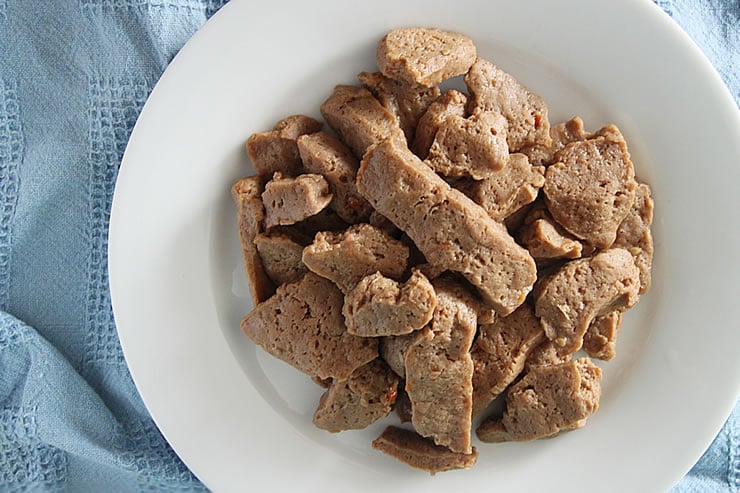
When I stopped eating meat about fifteen years ago I relied, like many new vegetarians, on processed meat substitutes: frozen soy burgers, fake “riblets,” and “chik” nuggets in brightly colored packages. For many people these products ease the transition to a new way of eating, but using them can also become an additive-laden crutch. Over the years I’ve transformed my own diet and, I have abandoned the freezer section for the kitchen with delicious, simple, unprocessed results.
The meat substitute I make most often is a batch of spicy black bean burgers, so tasty my omnivorous husband requests them regularly. But he also enjoys (and has even made) seitan.
Seitan. Mock duck. Wheat meat. Whatever you call it, seitan originated in Asia where vegetarian Buddhists used it in place of meat for centuries. Its spread in popularity is credited to the macrobiotic food movement which began in Japan. The word is not actually Japanese, but based in it, which is why I pronounce it “say-TAHN,” not “Satan.”
What is seitan?
Seitan is simply wheat gluten, spiced and simmered. My previous method used store-bought vital wheat gluten as a shortcut, but Andrew learned that the process to make vital wheat gluten is not replicable at home. Undeterred and not without a little spite, I set out to make it from scratch: Flour and water, here I come! After reading mopey stories about how time-consuming the process was, I was pleasantly surprised that the actual hands-on time was little more than the “shortcut” method, and I enjoyed the end product more than previous batches.
Gluten is the protein found in wheat which, when mixed with water, forms into long stretchy strings that give bread its structure. When you develop those strands, rinse off the starch, and cook the gluten bits, you get seitan. The chewy texture is quite similar to meat — I’ve definitely had seitan-based dishes that I’ve had to double-check that they were actually meat-free.
How to make seitan at home from whole wheat flour
The process is simple, but does take some time. Make a large batch and freeze the extra.
Mix whole wheat flour and water into a stiff dough to develop the gluten. I used my stand mixer.
Cover with cold water and let soak for a few hours or overnight. This both allows the gluten to develop and the starch to “loosen up.”
Knead the dough and rinse with cold water until the water runs clear. It takes about 10 minutes. I used a mesh sieve to help.
You’ll be left with only the gluten, which is considerably smaller in volume than your starting mass of flour. This was a smaller batch than the recipe lists, and 12 ounces of flour yielded just over 5 ounces of seitan.
Those stringy strands are exactly what we want.
Form the gluten into a ball; squeeze out as much water and air as possible. The smaller you can shape the piece of gluten, the firmer texture your finished seitan will have. Cut the gluten into pieces using a bench scraper or sharp knife.
Bring a pot of broth to a boil and drop in the pieces of gluten. Simmer the gluten for about half an hour until the broth is almost gone.
I like to sauté my seitan before using it, or you can store it refrigerated, covered in the broth (add more water if needed) for about a week.
This is a very basic recipe, but you can add spices to the dough when mixing, or play with your broth ingredients to add flavor components at any stage.
My favorite ways to eat seitan are on BBQ mock duck pizza, curried mock duck banh mi, in stir fries and fajitas. Leave the packaged “strips” on the shelf and with just a little effort, make your own unprocessed seitan.
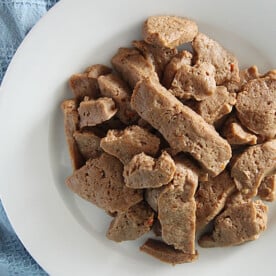
Homemade Seitan from Whole Wheat Flour
This is a very basic recipe. Add spices to the flour before mixing, or change-up the broth for different flavors. You can use homemade or store-bought vegetable stock, or mix up the quick broth outlined below.
Ingredients
Dough
- 6 cups whole wheat flour, 24 ounces / 900 grams
- 2 cups cold water
Broth
- 4 cups water
- 1/4 cup soy sauce, or Braggs liquid aminos
- 1/2 onion, chopped
- 1 tablespoon miso paste
- 1 medium tomato, cut in quarters
- 2 cloves garlic
Instructions
- Combine flour and water. Mix until a stiff-but-cohesive dough is formed. Use a dough hook and a stand mixer if possible.
- Form dough into a ball, place in a bowl, and cover with cold water. Cover and let stand 4-8 hours.
- Knead the dough and rinse until water runs clear, about 10 minutes. Squeeze dough and press out as much liquid and air as possible. Use a sharp knife or a bench scraper to cut the gluten into bite-sized pieces.
- Combine ingredients for broth (or use your preferred vegetable stock) and bring to a boil. Drop gluten pieces into boiling broth and return to a boil. Reduce heat to a simmer. Cook, turning gluten pieces occasionally, until the broth is mostly absorbed and reduced, about 30 minutes. Discard onion and tomato pieces.
- To use seitan right away, drain and sauté in a little oil. To store, cover with broth and keep refrigerated up to a week, or frozen. Thicken and reduce broth as a gravy if desired.
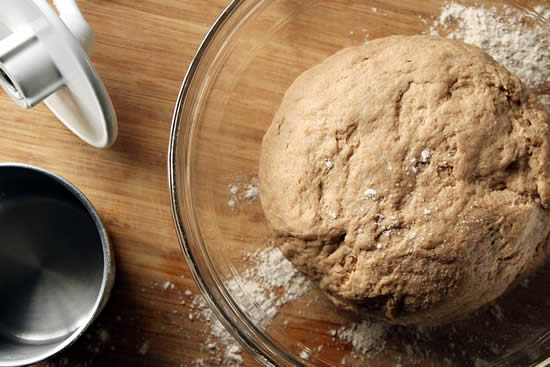
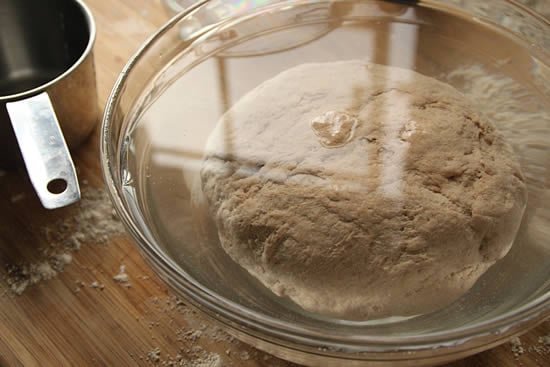
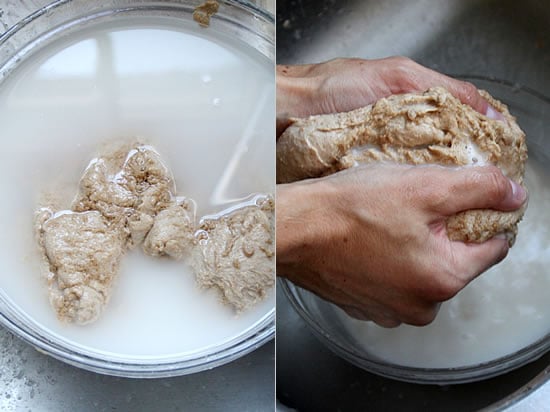

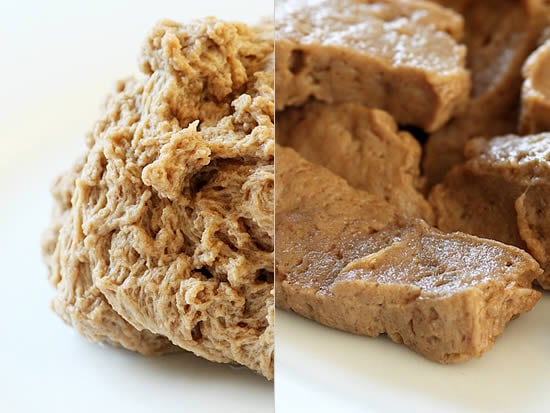
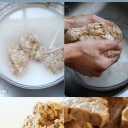

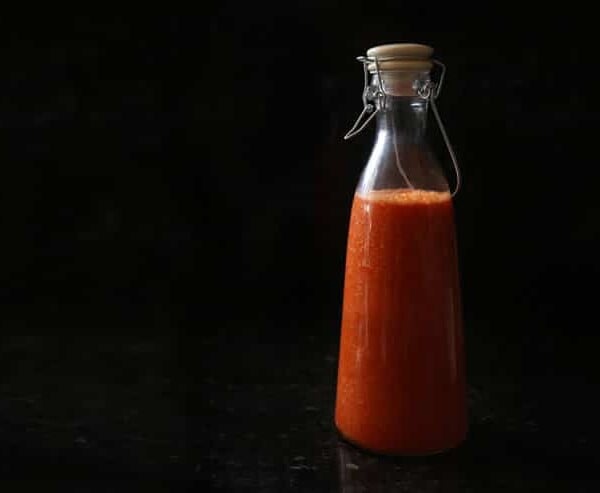
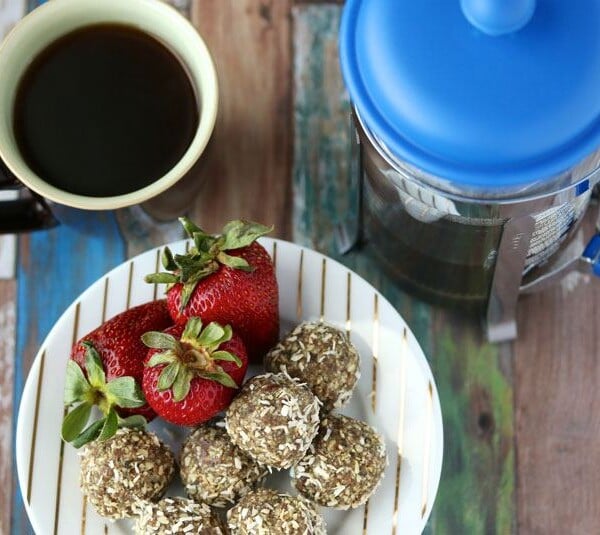
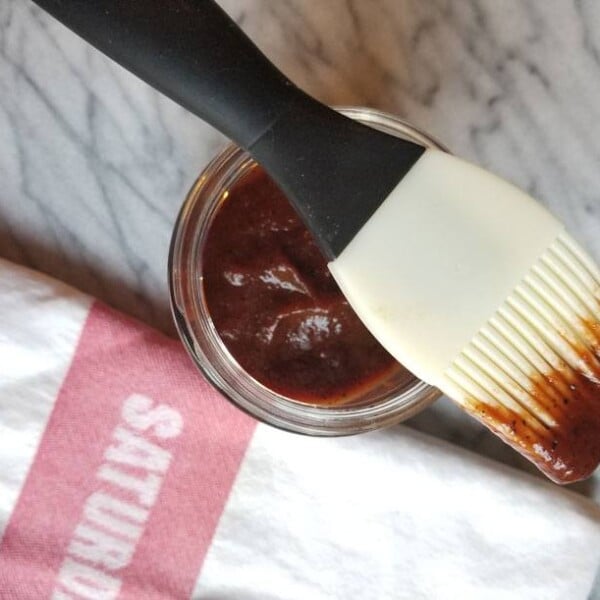
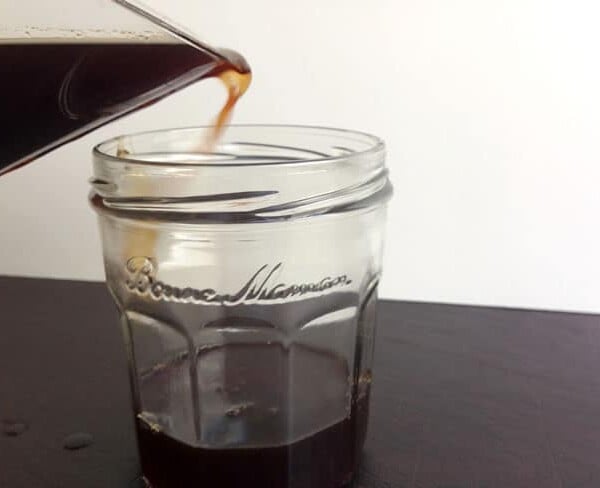















Nice simple recipe, this is I believe a Japanese dish. Not American
Thank you for your recipe for seitan. Can you estimate about how
much water (in gallons or liters) is needed to make the seitan?
So, theorhetically, you could make seitan using a sourdough starter, right?
I have a WW sourdough starter and I feel like the tartness and the bacteria from the starter would make for some very flavorful and comparatively healthy seitan, but I can’t seem to find anything of anyone trying it
Hi Maria – It certainly sounds like it could work, and is worth a try! Please let us know how it goes! 🙂
Any idea what the nutrition values for this are?
hey i was wondering if you could season the seitan when you add to water to the flour to give an extra flavor some result. Would this be possible or would it interfere with the gluten development?
I grew up with the metric system, so the cups and ounces always confuse me.
I think the measurements are not correct.
My measurement tables indicate that 1 cup is 8 ounces and 1 ounce is 28 grams.
Consequently 6 cups of whole wheat flour is not 24 ounces but 48 ounces and about 1344 grams.
The whole wheat flour from Arrowhead Mills also indicates correctly that it contains 32 ounces or 907 grams (about 28 grams per ounce). This turned out to be a little more than 4 cups.
It is possible that someone else already commented on this.
I also noticed that I need more water than just 2 cups on 6 cups of flour to make a doughy ball.
I would appreciate your feedback.
Jacob, your post is from awhile back, so I don’t know if you still want help. I am American, so I use cups and ounces. I use 7 cups of whole wheat flour dumped into the measure, so it is a little heavier. I add 3 cups of water, and knead it until it holds together well, usually adding more flour until it is not sticky. The recipe is not very picky apart from needing to wind up with a firm ball of dough. I let it set for just an hour in water, and then start rinsing. I have made yeast bread for years, and my hands are quite strong, so I get confused when others say it is hard work. Wrestling a barely tamed milk goat is hard. This is pretty easy. LOL I hope you can quickly translate the cups to metric measures, as I never did… Read more »
Hi Jacob, I apologize in advance for the wordiness of my response… There are two issues here: -The first problem you are having comes from a lack of clarity about volume vs. mass measures – both confusingly use the word “ounce” in the customary units. -The second problem is that the recipe has a very big mistake when it equates 6 C, 24 oz, and 900 g! 1 cup = 8 FLUID ounces; these are volumetric measures. The MASS of a cup of any substance, like flour, depends on its density, and 1 cup does NOT equal 8 ounces in terms of mass (though it is sort of close for water). A cup of water has a mass of about 237 g, or about 8.4 oz. A cup of whole wheat flour used in this recipe though has a mass of about 125 g, or just over 4 oz. As… Read more »
What are the macros of this, do you know? How does it compare to seitan made with vital wheat gluten? Thanks! 🙂
The first time I ever made seitan was way back before vital wheat gluten was available in stores. I used a recipe from the Farm Vegetarian Cookbook. IMO, it was the best homemade seitan (perhaps the best seitan) I’d ever had (one of my guests kept insisting there MUST be meat in the chili I made with it, and she refused to believe it wasn’t!). I didn’t soak overnight, but it required several ‘knead-let sit in cold water’ steps before it was ready. The finished, pre-cooked, product was almost like a big rubber band: you could hold one end of it and the rest would hang down, which is exactly how the photo in the FVC looked). (I don’t think I’d use miso in the broth, just because it seems like a waste of miso, which contains wonderful live organisms which are destroyed by heat).
Well” I consider myself a pretty versed cook’ and have studied many Cu sines and alternative pallets’ but, LOL, My Gluten don’t look nothing like your cohesive; Pylons Mine’ and I’ guess I’ll own them! LMAO~ are kinda like Protazoa, looking up at me through my Clever Curry Miso broth.. LOL.. IT”S ALIVE! will it still werk? Um, I’ll will do it again.
Directions worked perfectly. Thanks!